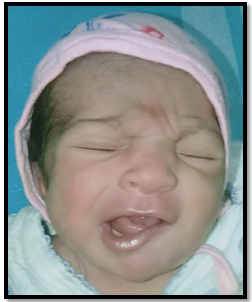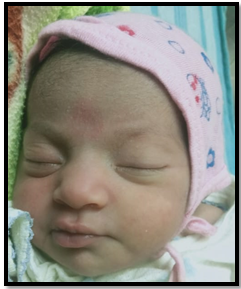International Surgery Case Reports
OPEN ACCESS | Volume 8 - Issue 1 - 2026
ISSN No: 2836-2845 | Journal DOI: 10.61148/2836-2845/ISCR
Rishabh Shah 1*, Navin Shah 2, Saurabh Chandalia 3, Nikunj Gupta 4, Nupur Shah 5
1Reader, Department of Oral & Maxillofacial Surgery, K M Shah Dental College and Hospital, Sumandeep Vidyapeeth Deemed to be University, Waghodia, Gujarat, India.
2Professor & HOD, Department of Oral & Maxillofacial Surgery, K M Shah Dental College and Hospital, Sumandeep Vidyapeeth Deemed to be University, Waghodia, Gujarat, India.
3Post graduate student, Department of Oral & Maxillofacial Surgery, K M Shah Dental College and Hospital, Sumandeep Vidyapeeth Deemed to be University, Waghodia, Gujarat, India.
4Post graduate student, Department of Oral & Maxillofacial Surgery, K M Shah Dental College and Hospital, Sumandeep Vidyapeeth Deemed to be University, Waghodia, Gujarat, India.
5Reader, Department of Pedodontics & Preventive Dentistry, K M Shah Dental College and Hospital, Sumandeep Vidyapeeth Deemed to be University, Waghodia, Gujarat, India.
*Corresponding Author: Rishabh Shah, Reader, Department of Oral & Maxillofacial Surgery, K M Shah Dental College and Hospital, Sumandeep Vidyapeeth Deemed to be University, Waghodia, Gujarat, India.
Received date: May 21, 2021
Accepted date: May 29, 2021
published date: July 12, 2021
Citation: Shah R, Shah N, Chandalia S, Gupta N, Shah N, (2021) “Asymmetric Face while Crying in Newborns: Cayler Cardiofacial Syndrome.”. International Surgery Case Reports, 2(5); DOI: http;//doi.org/03.2021/1.1025.
Copyright: © 2021 Rishabh Shah. This is an open access article distributed under the Creative Commons Attribution License, which permits unrestricted use, distribution, and reproduction in any medium, provided the original work is properly cited
Introduction: Cayler Cardiofacial Syndrome is a rare condition associated with asymmetrical face while crying and congenital cardiac disorder. We report a case reported with deviation of face to the right side while crying along with cleft palate.
Case Presentation: A full term female patient born through normal vaginal delivery was seen to have deviation of face to right side while crying and no deviation while sleeping or being quiet. The parents were seen to have no medical history. The baby was diagnosed with Cayler syndrome with the seen clinical features and 2-D echocardiogram showing ventricular septal defect of 3mm.
Conclusion: Cayler syndrome is an uncommon condition where the baby shows asymmetry while crying and facial symmetry while sleeping. Echocardiogram examination helps to find out associated cardiac malformations
Introduction:
Cayler cardio-facial syndrome is an unusual congenital heart disease syndrome characterised by asymmetric crying faces. Goldenhar syndrome, Moebius syndrome, Craniofacial microsomia, Velocardiofacial, DiGeorge syndrome, and Opitz GBBB syndrome are among the syndromes that must be distinguished [1]. On the basis of clinical characteristics and cleft abnormalities, a newborn was diagnosed as having Cayler Cardio-Facial Syndrome.
Case Presentation:
A term female baby was born to non-consanguineous couple, G2P1 mother (G2P1 usually refers to a woman in her second pregnancy, who has already given birth successfully and has one child) through normal vaginal delivery with birth weight of 2.3 kg. At birth baby was diagnosed to have asymmetric crying faces with deviation of angle of mouth to left side(fig 1) .

Figure 1: Deviation of face towards right while crying.
Baby had normal faces while sleeping or silent (fig 2).

Figure 2: No deviation of face while sleeping.
No abnormality in closing eyes while the sleeping was noticed. There was isolated cleft of hard and soft palate( fig 3) .

Figure 3: Cleft palate involving hard and soft palate.
There was no hemifacial microsomia, no epibulbar dermoid or other cranial nerve paralysis (ruling out Goldenhar, Moebius and craniofacial microsomia). Baby was investigated with 2-D echocardiogram which showed a ventricular septal defect of 3mm.
Discussion:
Cayler syndrome is a rare disorder that manifests as "asymmetric crying faces with cardiac defects" or "hypoplasia of the depressor anguli oris muscle with cardiac defects." Congenital heart disorders and the absence or hypoplasia of the depressor angular oris muscle, one of the muscles that regulates the movement of the lower lip, are two of its distinguishing characteristics [2]. The condition is congenital, and the mother normally notices it when the baby cries or smiles. Because of a defect in the depressor angular oris muscle on the affected side of the face, the lower lip cannot be drawn down and outward. [3].
Hypoplasia or agenesis of the depressor angular oris muscle of the lip may cause asymmetric crying faces as an isolated incident. When a child cries, the affected lower lip is pulled down to one side and there is no movement of the lip to the other side. The affected newborns have no difficulty closing their eyes and have normal forehead wrinkling movements, which distinguishes them from those with facial nerve palsy. Sucking motions are normal, and there is no saliva drooling Cayler, on the other hand, identified the connection between this trait and congenital heart disease and coined the term cardio-facial syndrome, which was later shortened to Cayler Cardio facial syndrome [1]. In 1994, the Cayler Cardio-Facial Syndrome was linked to the 22q deletion syndrome for the first time. The underlying cause for children with Cayler Cardio-Facial Syndrome is 22q11.2 deletion syndrome, in which a small portion of chromosome 22 is absent [4].
Other than abnormality of the depressor angular oris muscle, clinical characteristics and other system involvement include Cardiomyopathy, pulmonary stenosis, hypoplastic left heart syndrome, persistent left superior vena cava, tricuspid regurgitation, transposition of great arteries, total anomalous pulmonary venous return, aortic regurgitation, mitral stenosis, tricuspid atresia, right aortic arrhythmia.[5-7] Microcephaly, Micrognathia, Micropthalmos, and Micropthalmos are the most common associated malformations.
The cause of hypoplasia of the depressor anguli oris muscle has yet to be determined, though previous research has suggested intrauterine moulding or subclinical viral infections as possible causes [7]. This deletion manifests as a medical condition that is common in children who have this syndrome. Parents should be counselled for the long term consequences of deletion 22q, which has been linked to academic disabilities and mental retardation [8]. To rule out 22q11 deletion of the oculo-auriculo-vertebral spectrum (Goldenhar syndrome), a thorough examination is required. Chromosomal or DNA studies, ophthalmologic examination, and a cervico-thoracic vertebral column X-ray should all be included [9].
A case report of Cayler cardio facial syndrome in a newborn with situs inversus totalis has recently been released, emphasising the importance of echocardiographic examination of neonates with Cayler cardio facial syndrome [10]. Cayler cardio facial syndrome was linked to anotia and unilateral facial nerve palsy in a rare case study [11].
Conclusion:
Cayler syndrome is an uncommon condition where the baby shows asymmetry while crying and facial symmetry while sleeping. 2D-Echocardiogram examination helps to find out associated cardiac malformations. This condition is extremely rare, and no case of such syndrome has been reported from Western India. There has been a regular follow up schedule made for the craniofacial anomalies and syndromic patients in our institute to aid in the management of such patients.
Acknowledgements: None
Conflict of Interest: None
Financial Disclosure Statement: No funding was received for this article.